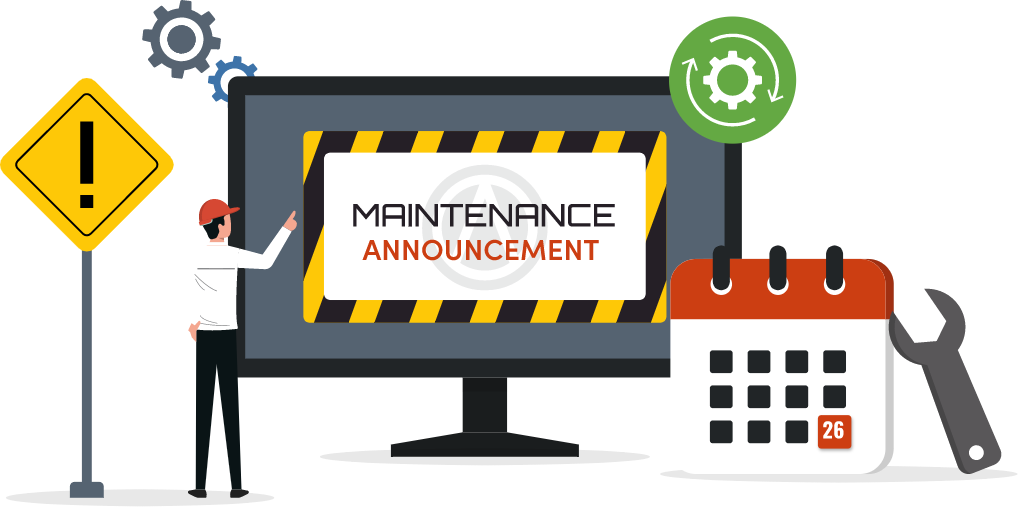How can I measure and track waste effectively?
Start with a waste audit, recording food, packaging, and utility waste over a set period. Use simple logs or leverage technology like POS systems and inventory management software to track trends, identify problem areas, and make data-driven decisions.
The Complete Guide to Restaurant Waste Management for Owners
Overview
Running a restaurant is a balancing act between delighting guests, keeping costs under control, and maintaining smooth operations. One of the biggest hidden drains on profitability is waste. According to recent studies, restaurants can waste up to 4-10% of the food they purchase before it even reaches a customer's plate. When you add in plate waste, packaging, and utilities like water and energy, the financial impact quickly grows.
Waste isn't just about what goes in the trash - it's money lost in ingredients, labor, utilities, and disposal fees. Beyond costs, poor waste practices can affect compliance with local regulations and even shape how customers perceive your business. Diners today care about sustainability, and many are more likely to return to restaurants that take active steps to reduce unnecessary waste.
The good news is that waste management doesn't have to be overwhelming. With the right systems in place, restaurant owners can cut costs, run more efficiently, and create a positive impression on their community. This guide breaks down waste management into clear, actionable steps so you can take control, reduce losses, and boost long-term profitability.
Understanding the Types of Restaurant Waste

Before making changes, it's important to clearly understand what kind of waste most often occurs in a restaurant setting. Not all waste looks the same, and each type carries different costs and challenges. By breaking it down into categories, owners can more easily identify where to focus improvement efforts.
1. Food Waste
This is the most visible form of waste in restaurants. It happens at multiple points- during preparation (trim, spills, mistakes), spoilage (ingredients expiring before use), and plate waste (food left uneaten by customers). Industry data shows that up to 40% of food in the U.S. supply chain goes uneaten, and restaurants contribute significantly to this figure. Every pound of wasted food represents not only ingredient costs but also the labor, energy, and storage that went into preparing it.
2. Packaging Waste
From plastic takeout containers and straws to cardboard boxes from suppliers, packaging waste piles up quickly. While some packaging is necessary, overuse or reliance on non-recyclable materials drives up both costs and environmental impact. Single-use plastics are especially under scrutiny, with many regions implementing restrictions or bans.
3. Energy and Water Waste
Waste extends beyond food and packaging. Outdated refrigeration, inefficient cooking equipment, and poor water management can drain profits. For example, a leaky faucet can waste thousands of gallons of water per year, adding up to unnecessary utility bills.
By categorizing waste in this way, owners can better see the full picture. Understanding where waste occurs is the first step toward building a practical plan that reduces costs, supports compliance, and keeps operations running efficiently.
Efficient Ordering at Your Fingertips
Experience Flawless Inventory Management with Altametrics
Measuring and Tracking Waste Effectively
You can't reduce what you don't measure. Many restaurant owners underestimate how much waste their business generates simply because it isn't tracked consistently. By putting systems in place to monitor waste, you gain the data needed to make informed decisions that save money and improve efficiency.
A waste audit is a good place to start. This means setting aside a period - usually a week - where all waste is recorded and categorized. For example, noting how many pounds of spoiled produce were discarded, how many plates returned with uneaten food, or how many trash bags filled up with packaging. Even a simple log kept by staff can provide valuable insights.
For owners looking for greater accuracy, technology offers more advanced solutions. Point-of-sale (POS) systems can track menu performance, showing which dishes lead to higher plate waste. Inventory management software helps identify patterns, such as over-ordering or recurring spoilage. Some restaurants also use scales and digital logs to weigh and record food waste directly.
Once you have a baseline, patterns begin to emerge. Maybe over-portioning is leading to leftovers, or certain menu items rarely get finished. By identifying these trends, you can make targeted changes instead of guessing. The goal is progress, not perfection - regular tracking helps you see the impact of small improvements over time.
Food Waste Reduction Strategies
Reducing food waste in a restaurant doesn't happen by accident. It requires understanding the main sources of waste and implementing practical steps to address them. By breaking the strategies down into categories, owners can focus on the areas that have the biggest impact on both costs and efficiency.
1. Smarter Inventory Management
Proper inventory management is the foundation of reducing food waste. Using the FIFO method ("first in, first out") ensures older stock is used before newer deliveries. Regularly checking expiration dates and storing ingredients correctly prevents spoilage. Ordering smaller, more frequent batches helps match supply with actual demand, especially for perishable items, reducing the likelihood of wasted ingredients.
2. Portion Control
Portion sizes directly influence plate waste. Oversized servings often lead to leftovers that go straight into the trash. Offering flexible portion sizes - such as half portions or shareable plates - gives customers choice and reduces uneaten food. Tracking dishes that consistently result in plate waste allows owners to adjust portion sizes or recipes to better match consumption.
3. Menu Design for Efficiency
Menu planning can significantly reduce waste. Designing dishes around overlapping ingredients helps ensure nothing goes unused. For example, vegetable trimmings can be repurposed into stocks, sauces, or soups, turning what would be waste into a valuable resource.
4. Responsible Disposal
Even with preventive measures, some waste is unavoidable. Composting food scraps keeps organic waste out of landfills, while donations of surplus food (where regulations allow) support the community. Training staff to separate organic waste from general trash ensures more efficient disposal and reinforces a culture of waste reduction.
By understanding these four areas, restaurant owners can create a practical, actionable plan to cut food waste, save money, and run a more sustainable operation.
Packaging and Single-Use Items Management

Packaging and single-use items are another significant source of waste in restaurants, especially with the rise of takeout and delivery. While these items are necessary for food safety and convenience, overuse or reliance on non-recyclable materials can drive up costs and negatively impact the environment. Understanding and managing this waste is an important step toward efficiency and sustainability.
1. Identify Major Packaging Waste Sources
Start by taking stock of the packaging materials your restaurant uses daily. Common items include plastic containers, straws, cutlery, napkins, and cardboard boxes. By identifying which items contribute most to waste, you can prioritize areas for reduction.
2. Explore Eco-Friendly Alternatives
Replacing single-use plastics with recyclable, compo-stable, or reusable options can reduce both waste and your environmental footprint. For example, paper straws, biodegradable containers, and reusable condiment cups are increasingly available and affordable. Even small changes, like switching to compo-stable bags for takeout, can add up over time.
3. Reduce Excess Packaging
Over-packaging adds unnecessary material costs and waste. Evaluate portion sizes, bagging practices, and whether all items need individual packaging. Simple adjustments - such as providing utensils only when requested - can significantly cut waste while still maintaining a positive customer experience.
4. Train Staff and Set Clear Guidelines
Staff play a crucial role in packaging management. Providing clear instructions on when and how to use packaging materials ensures consistency and prevents unnecessary waste. Regular reminders and checklists help maintain these habits.
By focusing on these areas, restaurant owners can manage packaging waste more effectively, reduce costs, and build a reputation as an environmentally conscious business without compromising service quality.
Transform Your Restaurant Operations Now!
Effortless Inventory Tracking with Altametrics!
Engaging and Training Staff
Effective waste management in a restaurant isn't solely about systems and tools - it heavily depends on the people who implement them every day. Staff engagement and proper training are essential to creating a culture where waste reduction becomes a natural part of daily operations.
1. Build Awareness and Buy-In
The first step is making your team aware of the impact of waste. Sharing clear, data-driven information about how much food, packaging, and energy is wasted - and how it affects the restaurant's profitability - helps staff understand why their actions matter. When employees see that their efforts directly contribute to cost savings and sustainability, they are more likely to participate actively.
2. Provide Practical Training
Staff need concrete guidance on waste reduction practices. This includes proper portioning, correct storage methods, separating recyclables from trash, and handling leftovers safely. Demonstrating these procedures and incorporating them into daily routines ensures consistency. Visual reminders, checklists, or short training sessions during shifts can reinforce the importance of following these practices.
3. Encourage Accountability and Feedback
Assigning responsibility for waste tracking can motivate staff to take ownership. For example, having a rotating "waste monitor" each week or shift encourages consistent attention. Encourage feedback from employees - they often have practical insights on reducing waste that management may overlook.
4. Recognize and Reward Efforts
Acknowledging staff contributions can strengthen engagement. Simple recognition or incentives for consistent waste reduction behavior encourages ongoing participation and reinforces a culture of sustainability.
Engaging and training staff effectively ensures that waste reduction strategies aren't just policies on paper - they become part of the restaurant's operational routine, saving money and supporting long-term efficiency.
Leveraging Technology for Waste Management
Technology can be a powerful ally for restaurant owners looking to reduce waste, improve efficiency, and make smarter decisions. By using data and automation, restaurants can identify waste patterns, track performance, and optimize operations with minimal manual effort.
1. Point-of-Sale (POS) Systems
Modern POS systems do more than process orders - they provide valuable insights into sales trends and menu performance. By analyzing which dishes are most popular and which generate the most plate waste, owners can adjust menus, portion sizes, or ingredient orders accordingly. This data-driven approach helps prevent overproduction and reduces food waste at its source.
2. Inventory Management Software
Inventory software allows restaurants to track stock levels in real-time, monitor expiration dates, and forecast demand more accurately. By avoiding over-ordering and reducing spoilage, restaurants save money while ensuring ingredients are used efficiently. Some systems also integrate with POS data to automatically suggest order quantities based on historical usage.
3. Smart Equipment
Technology extends beyond software. Energy-efficient refrigeration, automated cooking appliances, and water-saving devices reduce utility waste and improve operational efficiency. For example, smart refrigerators can monitor temperature fluctuations and alert staff to potential spoilage before ingredients go bad, while low-flow faucets conserve water without impacting service.
4. Data-Driven Decision Making
The ultimate benefit of technology is actionable insights. By collecting and analyzing data across inventory, sales, and operations, restaurant owners can make informed choices about menu adjustments, purchasing practices, and staff training. Small, data-backed changes often produce measurable cost savings and reduce overall waste.
Leveraging technology not only simplifies waste management but also positions a restaurant for long-term sustainability and profitability.
Building a Sustainable, Profitable Future
Restaurant waste management isn't a one-time task - it's an ongoing process that requires attention, strategy, and consistent effort. By combining smart food handling, efficient packaging, staff engagement, and technology, owners can significantly reduce waste while improving profitability.
Creating a culture of sustainability starts with small, manageable steps. Begin by measuring waste, tracking patterns, and implementing practical strategies in the areas that have the most impact. Over time, these incremental improvements add up to meaningful cost savings, better resource utilization, and a stronger reputation with environmentally conscious customers.
It's also important to leverage tools that make waste management easier and more precise. Systems that integrate inventory, sales, and operational data allow owners to make data-driven decisions that prevent over-ordering, reduce spoilage, and optimize staff workflows. This not only cuts costs but also supports long-term operational efficiency.
For restaurants looking to streamline their operations and improve profitability through smarter waste management, Altametrics offers an all-in-one platform designed to give owners full visibility into inventory, labor, and costs. With real-time insights, predictive analytics, and integrated reporting, Altametrics helps you make informed decisions that reduce waste, save money, and keep your restaurant running smoothly.
Take control of your restaurant's waste and profitability today - explore how Altametrics can transform your operations by clicking "Schedule a Demo" below.



































































































































































































































































